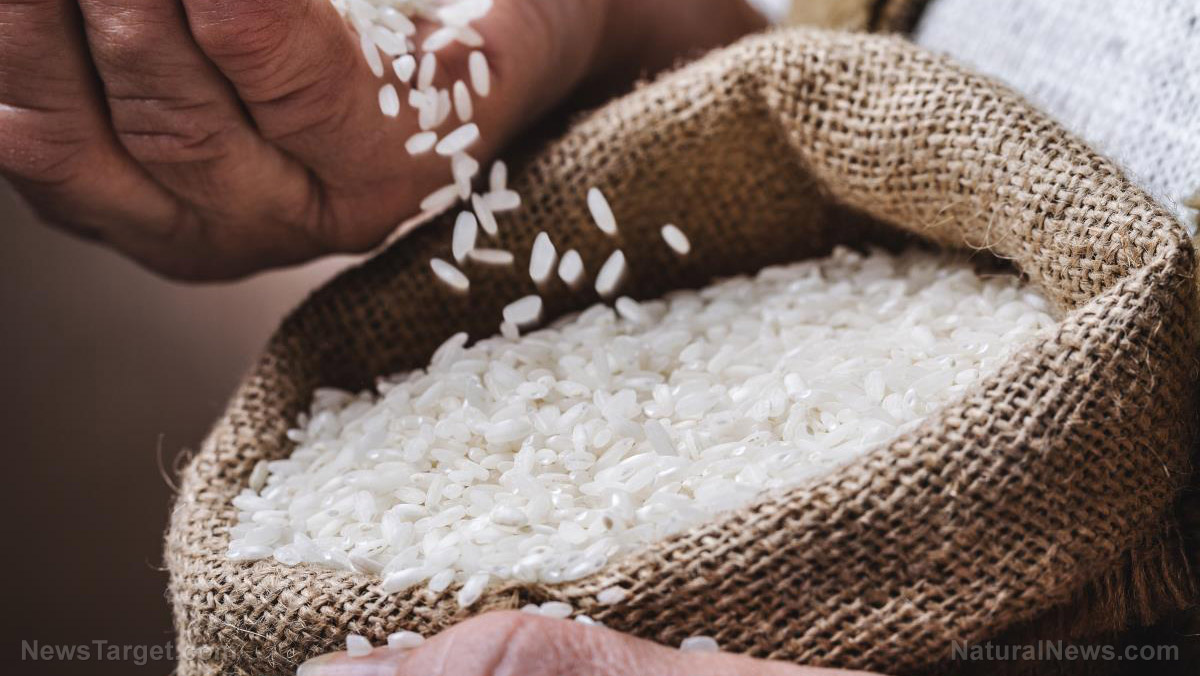Genetically modified rice from China approved by the FDA — without independent testing
02/05/2018 / By Tracey Watson

The debate raging around the genetic modification of food crops is likely to heat up even more now that the Food and Drug Administration has declared a new GM rice known as Huahui 1 to be safe, despite performing none of its own independent tests. The rice was developed by a research team from Huazhong University in China, and has been engineered to be more resistant to pests like the rice stem borer.
The Chinese government has thrown billions of dollars at the development of GMOs, but the unpopularity of such crops with consumers in China has prevented their large-scale agricultural production in that country. Waking Times recently reported that massive demand for organic produce in China has caused food shortages because of the country’s issues with pollution, and has led to the production of “fake organics.”
Unfortunately, a lack of demand at home has also led to a flood of questionable Chinese products flowing into other countries, including the United States.
Of course, the U.S. government is not known for its overly stringent rules and regulations when it comes to protecting its citizens from the dangers of pesticides and GMOs, and the Huahui 1 rice has proven to be no exception.
First the Environmental Protection Agency (EPA) gave the GM rice the stamp of approval in terms of pesticide residue levels, and then more recently, the FDA approved it from a nutritional and safety standpoint.
The university that developed the rice recently published an excerpt from a letter posted on the FDA website:
Genetically engineered Huahui No.1 rice grain does not raise issues that would require premarket review or approval by FDA.
This does not mean, however, that farmers in the U.S. can start cultivating crops of the new rice. Approval would still need to be obtained from the U.S. Department of Agriculture. Nonetheless, as Huazhong University was quick to point out, the FDA and EPA approvals of Huahui 1 validate the testing and evaluations carried out by the research team.
It is telling that while rice is China’s staple food, there has been no indication from the Chinese government that it will implement plans to start developing the new rice. And there are likely sound reasons why they would not do so.
The fact is, GMOs have not been properly tested to determine their long-term health effects. As Natural News previously reported, the thousands of tests backing up the safety and nutritional benefits of GMOs have all been flawed for two reasons:
- They have been conducted by the biotech industry itself; and
- They have all looked at the short-term effects of GMOs, without evaluating the long-term results.
The controversial “Seralini” study, which was totally independent and did look at the longer-term effects of consuming GMOs over a two-year period, found that they caused organ damage, cancer and premature death in rats. These effects only became evident from the fourth month of consumption, while the biotech industry tests have all been conducted over three months or less. Other subsequent studies have backed up Seralini’s findings.
Then there are the environmental effects of GM crops, including the risk of contamination of wild crop species by means of wind and insect pollination or in other ways. Studies have also found that farmers are more likely to spray larger quantities of cancer-causing herbicides like Roundup on their GM crops, knowing that these have been modified to be more herbicide-tolerant. Then there are the unintended consequences to non-target organisms like butterflies and bees.
A 1999 laboratory study published in Nature showed that pollen from B.t. corn, a variety of GM corn, resulted in high mortality rates among monarch butterfly caterpillars. Even though these caterpillars feed on milkweed plants, not on corn, there is a concern that if pollen from the B.t. corn is blown into a neighboring field with milkweed plants, the caterpillars would consume it and perish.
Perhaps the U.S. government should be wondering why the Chinese are so keen on developing new genetically modified crops but extremely hesitant to grow them in their own country. Follow more news on GMOs at GMO.news.
Sources include:
Tagged Under: badheatlh, Chinese GM rice, contamination, dangerous food, dirty food, Ecology, environment, EPA, FDA, food supply, fraken food, GM rice, GMO, GMOs, Huahui 1, U.S. approval
RECENT NEWS & ARTICLES
COPYRIGHT © 2017 FDA NEWS




















